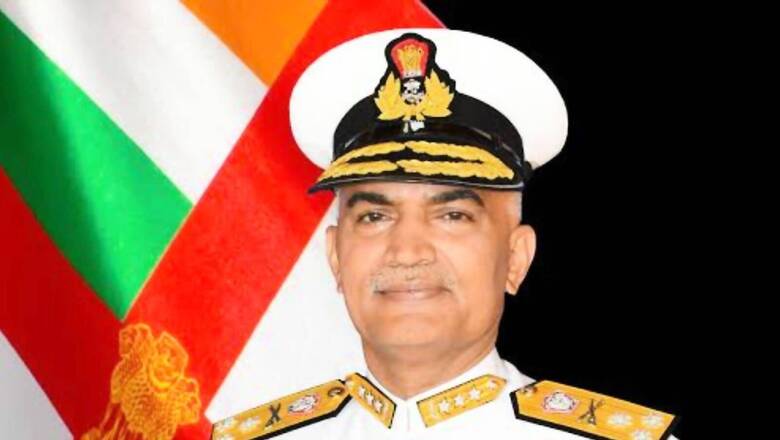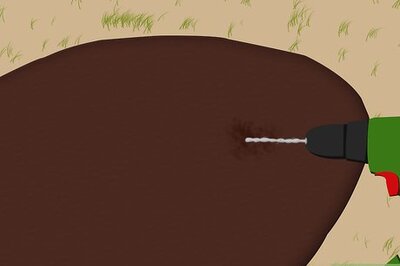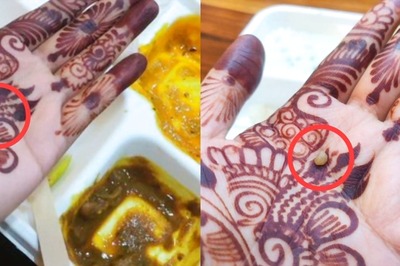
views
The Indian Navy continues to remain on high alert since tension broke out at the Line of Actual Control (LAC) in eastern Ladakh between India and China last year, and is keeping a close watch on Chinese ships deployed in Indian Ocean Region, said navy chief Admiral R Hari Kumar on Friday.
Admiral Kumar, who took over as chief of naval staff on November 30, was addressing his first press conference ahead of Navy Day observed on December 4.
“When there were tensions at the northern borders, our ships were out for mission-based deployment. All other ships were ready for any escalation in the situation,” the new navy chief said, adding, “we kept their (Chinese) ships under close surveillance, which we continue to do even now.”
He added, “Any of their ships coming on deployment, we keep a watch on them. We maintain a fairly good maritime domain awareness in our area of responsibility.”
Last year, amid heightened tensions in eastern Ladakh between India and China, the navy had deployed a large number of ships in the Indian Ocean Region (IOR) from its eastern fleet.
Admiral Kumar further said the Chinese navy had been present in the Indian Ocean since 2008, and three to eight of their ships were deployed in the region at any given time.
He also said the Chinese navy had built 138 ships in the last 10 years and, in terms of naval assets, it had emerged as the largest navy globally. Talking about expansion plans of the Indian navy, Admiral Kumar said over a period of time, it had evolved from 33 ships to a 130-ship force.
Discounting any comparison to the growing Chinese navy, he said the Indian Navy was a potent and well-balanced force. “We don’t go into bean counting or develop capabilities in response to a particular country. We develop capability based on our maritime interests,” he said, adding, “therefore, our planning and preparedness is to ensure preservation of our maritime interests.”
The navy chief further said the Indo-Pacific region was of great importance to India. “We have about $200-billion trade passing through and have our diaspora staying in littorals in the region,” he said.
Third aircraft carrier: Need balance between ships and submarines
Talking about the requirement for a third aircraft carrier, he said it will bring a specific capability for the navy as it will have strike powers, air defence and surveillance capability. “It will protect the assets of the navy at sea. Submarines bring a different capability, of sea denial and stealth,” he added.
“It (third aircraft carrier) is not either/or, it’s a capability we have to have,” he said.
The navy has long pushed for a third aircraft carrier for several years, but the chief of defence staff General Bipin Rawat insisted on prioritising procurement of submarines over a carrier, Admiral Kumar said.
He also said the Indian Navy must have the right balance of surface ships, submarines and aircraft. “We are developing a plan as per integrated capability development plan (ICDP), which will decide the right mix of ships, submarines and aircraft,” he added.
The ICDP is a combined capability development plan of the three services for 10 years. The navy chief also said based on the ICDP, it will be decided how many ships strong the Indian navy aspired to become.
He indicated that a 170-ship force that the navy envisaged earlier was not the final goalpost, and that it could increase or decrease depending on capability plans being developed and budgets.
The Indian Navy currently has 130 ships. A total of 28 woman officers are currently deployed across 15 warships at present, he added.
‘Theatre commands will take time’
Talking about higher defence reforms of integration of the three services, Admiral Kumar said jointness and integration was not something that could take place in a short time. He cited the example of the US military, which took almost 50 years to undergo the process.
Stating that developing theatre commands would be a complicated process, he said an initial study on this was being carried out and the recommendations had been submitted.
“Later, a detailed study was done. This had to be tried and war games are on as table top exercises. We are now in the third stage of the war gaming process. A third study to take this forward has been ordered by the DMA and we are all working on this,” he said.
He also said the maritime theatre command (MTC) will be finalised by the middle of next year. He said the command structures will largely remain in place with a lean theatre command organisation on top.
The service chiefs, he said, will be responsible only for raising, training and sustaining while operational aspects will be handled by the theatre commander. “But the chief will be in the loop of operations as he is part of the chief of staff committee,” he added.
He further said the roadmap for unmanned systems had recently been approved and promulgated. “It’s a 10-year plan and we are working on it. Our plan is to have indigenous development of unmanned systems, autonomous airborne systems, surface vessels, underwater systems,” he added.
Read all the Latest India News here



















Comments
0 comment